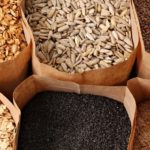If you’re a regular reader of this blog, you know that the obesity statistics in the US convey a sad story: more than two-thirds of all adults over the age of 20 now qualify as overweight or obese. The pervasive weight problem has spawned an industry that grosses almost $60 billion annually in diet books, weight loss aids, and programs designed to help participants shed pounds. Yet, in spite of the endless array of available diet programs, products, and the constant media coverage highlighting the dangers of being overweight, we keep getting fatter and fatter, with obesity rates still on the climb. While many blame a willpower deficit for the failure of 95 percent of all diet attempts, a series of new studies has shed some light on a few other possible reasons that all the diet knowledge in the universe doesn’t seem to be making a dent.
According to a series of studies just published in the Journal of Consumer Research, people often opt for larger portion sizes because it makes them feel more important to do so.1 Strange though it seems, the “bigger is better” mentality apparently influences people to believe that large portion size infers higher status. Now, before you scoff at the notion, take note of the data. In the first experiment cited, subjects guessed the status of people based solely on the size of the coffee they chose. The subjects tended to assume that people who opted for the Grande or Vente instead of the merely tall were more influential and important than those who chose the modest size, even though the drinks were provided for free. (Sometimes you do have to wonder how we’re going to survive as a species.)
In another experiment, researchers split participants into two groups. One group entered a room with a sign that said, “We all feel powerful in the morning.” The other group went into a room with a sign saying, “We all feel powerless in the morning.” Then the participants visited a buffet table spread with bagels in several sizes. Those who came from the “powerless” room helped themselves to larger bagels than did those in the “powerful” group, which the researchers interpreted to indicate an unconscious desire to boost esteem by choosing the larger portion.
In yet another experiment, subjects got told that certain small appetizers were the favorite choice at prestigious events such as presidential parties, while other subjects were informed that large appetizers were the choice at such events. Sure enough, the subjects inevitably opted for the appetizer size ostensibly preferred by the big-shots.
In the last experiment, researchers found that subjects tended to order large smoothies when with someone else, but when alone, they opted for a smaller size.2
All this adds up to evidence that people do, in fact, tend to associate portion size with status, say the scientists. The research team, based at Northwestern University, wrote, “Because vulnerable consumers are prone to express their status in order to compensate for their undesirable position and respond to daily threats, this research further proposes that the tendency to use the size of food options within an assortment will be particularly strong among those consumers who feel powerless.” In other words, they believe that people in lower socioeconomic classes, who feel powerless, are especially likely to choose to eat bigger portions to boost their perceived status.
While it may be true that the quest for prestige does have a subliminal effect on whether you go for the mini portion or the maxi, other psychological factors apparently play a part as well. For one thing, the size of the plate influences how much you pile on it, and as I’ve written before, dinner plate sizes have increased by an average of 30 percent since the 1960s. (That’s nothing compared to the increase in size since the days when Michaelangelo painted the Last Supper. Analyseis of that painting show that plate sizes have increased by 66 percent since then and portion size by almost 70 percent.) In any event, we tend to fill up our plates, and obviously the larger the plate, the more food we can fit onto it.3
Then there’s the influence of color. Strange but true — research shows that the color of the plate makes a difference.4 When people choose food that matches their plate color, they take bigger portions. If the food contrasts with the plate color, they take less. For instance, if the menu features pasta with tomato sauce and you have a red plate, you’re likely to pile it up with more food than if you have a white plate, because the tomato sauce will blend in with the red plate and make the portion look smaller than it actually is. If you use a white plate, on the other hand, you’ll probably take less because the food will dominate the plate and the portion look larger. The director of the color study, Koert van Ittersum of Georgia Tech advises, “Instead of scooping vanilla ice cream into a white bowl, you’d do better by your diet to pick a different color dish.”
Dr. Ittersu’s team found that blue plates tend to be particularly effective in making portions look larger, so blue plates work best for dieters, with white plates almost as helpful. Red or gold dinnerware, on the other hand, has the opposite effect, inspiring subjects to eat considerably more. And by the way, if you decide to replace your dinnerware, you might also want to get some new tablecloths. The researchers found that when there’s a high color contrast between the plate and the tabletop, people tend to take more food. If you want to drop weight, choose blue on blue or white on white (if you can stand it aesthetically). The phenomenon results from an optical illusion discovered in the 19th century by Franz Delboeuf, who found that the size of a circle appears to change when it’s placed inside of another circle. When the food shows up on the plate, it looks like a small circle inside a slightly larger circle, and that makes it appear bigger. Check this video to see the phenomenon for yourself.
In any event, it’s perhaps a bit of a jump to conclude that the quest for status, plate size, the wrong color plates, and a high-contrast tablecloth are to blame for your bulging waistline; but on the other hand, it certainly can’t hurt to take every factor into consideration if you really want to trim down. It’s a no-brainer to use smaller plates, and not a big deal to attempt to contrast food and dinnerware color… unless you already have red or gold plates. If you do, a fast trip to the thrift store can help you out until you can afford to replace your entire collection. And now that you know the quest to garner prestige results in choosing the oversize portion, you might want to try some reprogramming to make yourself believe that small is beautiful. You can start by collecting miniature art.
1 Lasman, Brian. “Larger food portions a symbol of power, Northwestern researchers find.” 1 November 2011. The Daily Northwestern. 16 December 2011. < http://www.dailynorthwestern.com/campus/larger-food-portions-a-symbol-of-power-northwestern-researchers-find-1.2663639#.TuuqBFa8GSr>
2 Borland, Sophie. “A large latte, not a small? You’re just a social climber, not just being greedy.” 24 October 2011. Mail Online. 15 December 2011. < http://www.dailymail.co.uk/news/article-2052642/A-large-latte-small-Youre-just-social-climber–just-greedy.html>
3 Hellmich, Nancy. “Portion sizes increase in ‘Last Supper’ paintings.” 3 March 2010. USA Today. <http://www.usatoday.com/news/health/weightloss/2010-03-23-lastsupper23_ST_N.htm>
4 Éating too much? Check your plates.” 15 December 2011. The Zoc Doc Blog. 15 December 2011. <http://blog.zocdoc.com/eating-too-much-check-your-plates/>












this post is very nice and
this post is very nice and interesting one to read
Appetite out of control since
Appetite out of control since Dexamyl was taken off the market; children, did you know this was a Smith, Kline & French drug prescribed by all doctors and it killed appetite! Who Knew???
Not only did it kill appetite, it sharpened focus at work – those ‘ole raises kept a-coming to the beautiful, slimmer, sharper YOU!! Problem. Tolerance. A larger dose necessary to keep the good mood, the lessened appetite – along with the larger dose came loss of good quality sleep. When that goes, along comes paranoia.
So here we are, many years later with no drug in sight that can lessen appetite, up the mood, up the focus, and not have a heart attack! So sorry. Too bad.